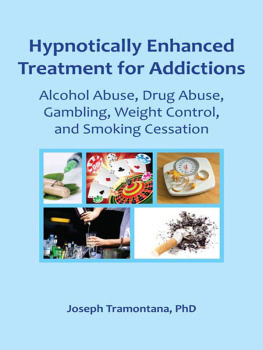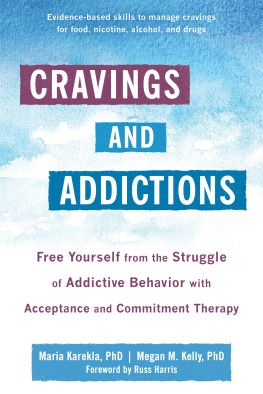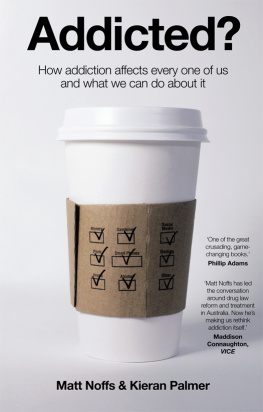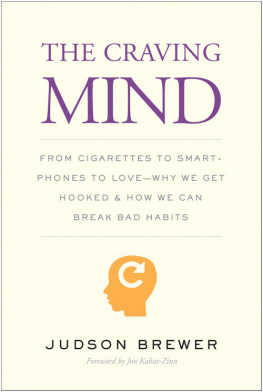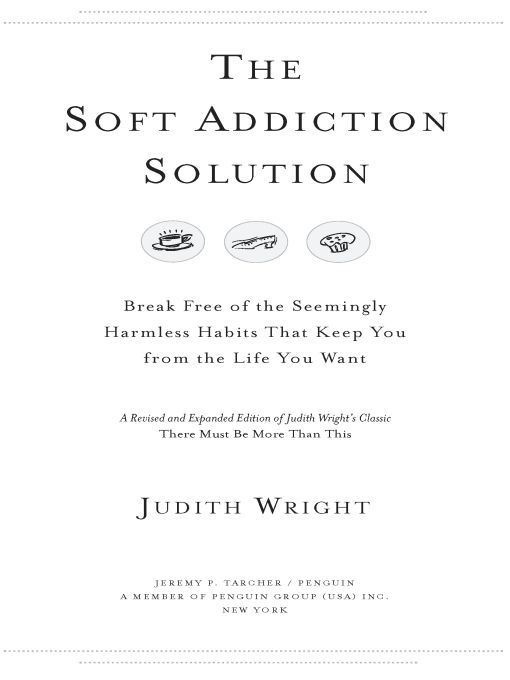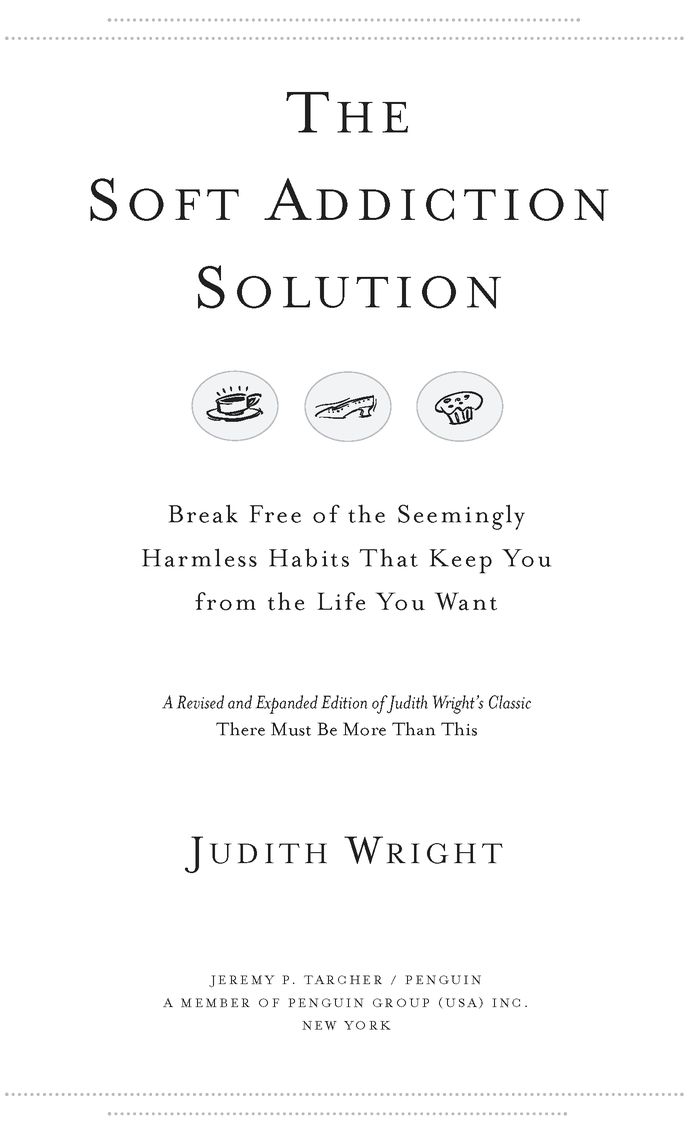Table of Contents
Also by Judith Wright
THE ONE DECISION
INTRODUCTION
What an amazing journey it has been these past few years since the first version of this book began helping people gain more time, money, intimacy, and satisfaction by breaking free of their soft addictions.
From working with thousands of people at my trainings, I knew the importance of helping people overcome soft addictions, but I had no idea that the concept would catch the attention of America the way it has. Nor did I imagine that soft addictions would speak to people so universallyacross cultural, ethnic, and national divides. Labeling this phenomenonputting a name to something that was operating under the radar of our consciousnesstriggered a collective A-ha! Thats it!
Most people only needed to hear the term, and they immediately had an automatic, almost intuitive, understanding of soft addictions and how ubiquitous they were. Their response was, and continues to be, nothing short of amazing. Even more amazing is the time, money, love, and fulfillment they reclaim when they deal with their soft addictions. At my seminars, people calculate the actual costs of their soft addictions. To my surprise, the lowest actual cost that a person has calculated for soft addictionsfrom coffee to Internet shoppingwas just shy of $3,000 a year. And the average in most seminars has been somewhere between $15,000 and $18,000! If this is what you can reclaim in real dollars, just imagine the lost intimacy and satisfaction you can regain.
Facing soft addictions and their costs can make you vulnerable. I felt I was given a precious window into the lives of countless people as I traveled across the country talking to them about their dreams. In book-stores, on planes, in hotel lobbies, on college campuses, in churches, or corporations, everyone seemed to understand that soft addictions were blocking them from the life they want. There wasnt one place I visited that people didnt want to get more of what really matters out of life-what I call MORE.
People resonated with the call to greater personal freedom, fulfillment, and satisfactioneveryone from taxi drivers in some faraway city to the CEOs I consult with, from security personnel at airports as I got ready to leave for another appearance to the students I coach. These personal and precious contacts gave me a lens into the hearts and minds of thousands of people, who allowed me to peek beneath the surface, to see what matters most to them and what is keeping them from living the lives they want.
National and local media alike caught the importancemore than 50 TV programs like the Today show and Good Morning America, more than 350 radio programs, and more than 35 newspapers and magazines, including The San Francisco Chronicle, Fitness, and Marie Claire.
Whether I was being interviewed on a country music station or National Public Radio, a sports or late-night jazz program, a talk show or a fast-paced early-morning drive time, the same truths were shared: everybody has soft addictions; there are huge costs to the quality of their lives and to society as a whole; and everybody wants MORE out of life. I have been deeply touched by how people have shared so openly and honestly about the trap of their soft addictions; their feelings of being stuck, settling, giving up, or being frustrated at not getting everything out of life that they deeply desire, or about their universal desire for MORE in their lives.
I encountered results-oriented executives who saw how their non-productive patterns were limiting their accomplishments and satisfaction, and couples whose relationships had lost the thrill as they spent their evenings zoned out instead of blissed out on life. Parents shared how their family members were in different rooms of the house at night, glued to a different screen, watching TV, playing video games, participating in a computer chat room, or surfing the Internet. Singles admitted to isolating or posting not-so-accurate depictions of themselves for online dating rather than risking going out and being seen for who they really are. Women discussed comforting themselves with Ben and Jerrys rather than going out and meeting a real Ben or Jerry. Children talked about TV, computers, video games, and oversnacking instead of playing outside or being with other kids. Men admitted to being hooked on sports, gadgets, and pornography, while women confessed to overshopping, overglamorizing, overcleaning, overworking out, and gossiping.
Soft addictions are universal, yet while some are very common, others are more personal in nature:
Im buried in clutter.
Im wasting hours surfing the Internet.
Im sleeping my life away and hiding from my life.
Im losing days of my life just watching TV I dont care about.
Im staying at work later and later so I can avoid going home. I feel competent at work, but not in my personal life.
Im spending every weekend at garage sales, trying to find things for my collection.
Once addressed, executives careers are renewed, families discover new ways to be close, children get better grades, and even marriages are saved. You will be amazed at the resources and satisfaction you have available as you replace your soft addictions with MORE of what you really want. In order to do this, you must overcome Yeah, but...
YEAH, I HAVE SOFT ADDICTIONS, BUT...
As much as people acknowledged the problem, they werent always all that keen to do something about it. They were still in denial about the costs of their soft addictions, and still too attached to the pseudo-comfort they thought they derived from them to consider living another way. They saw the problem but werent always willing to release their soft addictions even if the rewards of overcoming them was unprecedented. But over time, this seems to be changing.
If you are like the thousands of people I have met who now identify with the term soft addictions, you are waking up and doing what it takes to free yourself for MORE. Where the job of the first book seemed to be to bring the problem of soft addictions to your attention, this new expanded version seems to be emerging at a time for you who are willing to solve the problem, through the Soft Addiction Solution.
I know from my own experience that the Soft Addiction Solution really works. I discovered the eight key skills within this book and, by applying them, changed my life. Now thousands of other people have done the same. The Soft Addiction Solution did far more than just help me change a bad habit or two; it transformed my life and the lives of those who have heeded its call.
Your soft addictions have important information for you, if you allow yourself to listen. They provide windows into your deepest dreams and desires. Once over your denial, you experience the paradoxical mix of laughing loud and long at your foibles while reaching sublime spiritual spaces that put you in touch with your deepest hungers and the sacred emptiness within you. You experience the healing power of admitting the ridiculous stuff you dothe wild rituals, the excuses and rationalization riddled with stinking thinking, and the lengths you go to hide your habitswith compassion and humor. Out of all the trainings we do at the Wright Institute, the Soft Addiction Solution training has always been one of my favorites, and I think its for this reason: it is so deeply personal, so tenderly human, so divinely revealingand so powerfully effective.



